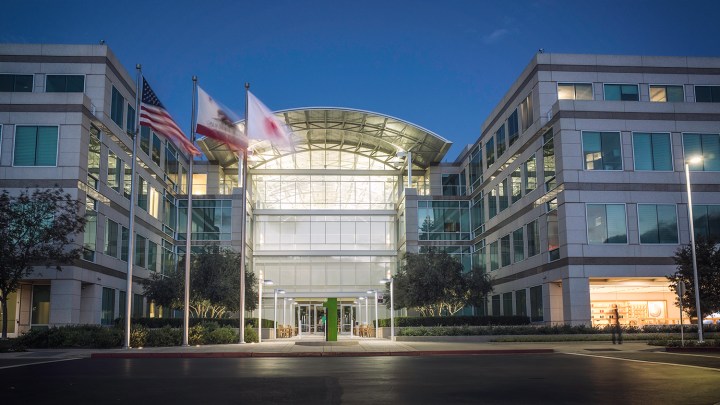
In April, a decision by the Department of Motor Vehicles to grant Apple an autonomous vehicle testing permit allowed the company to use California’s public highways for testing self-driving technology. Apple wasted no time in taking advantage: Just a couple weeks later, a white Lexus RX450h SUV was seen exiting an Apple facility decked out with sensors, per an eyewitness who provided photographic evidence to Bloomberg. Sensors on the vehicle reportedly included “Velodyne Lidar Inc.’s top-of-the-range 64-channel lidar, at least two radar, and a series of cameras.”
Nine months after first receiving its permit, Apple is expanding its operations. The company now boasts 27 vehicles in its autonomous fleet, which should help Apple chase down the competition (namely Waymo and Lyft, which are making great strides in the self-driving space). Since last July, Apple has registered 24 additional Lexus SUVs in California, though this is still nothing compared to Waymo’s fleet of 600 minivans in Phoenix.
Last April marked the first time Apple was given a permit for its autonomous cars. Soon, its hardware lineup could be decidedly larger than the laptops and iPhones to which we’ve become so accustomed. The permit initially allowed Apple to test three 2015 Lexus sport-utility vehicles (the number has clearly since increased), all of which were be retrofitted with the necessary hardware and software that would allow them to operate without a driver. The permit also required human operators to be present whenever the cars are on the road.
While Apple has been consistently cagey about its plans to delve into self-driving territory — which may or may not be code-named Project Titan — the company penned a letter to the National Highway Traffic Safety Administration in 2016 offering its support for autonomous technology. And the iEmpire refined its epistolary skills again in a letter made public on April 28, this time to the California DMV. In the letter, Apple called upon the state to toughen its policy on testing self-driving cars, especially in connection with disengagements, thereby requiring companies to turn over more public data that could help Apple gain ground on competitors.
The company also asked for more clarity around requirements for the use of safety drivers during autonomous testing and loosened requirements concerning the sorts of cars that can be used during trials. Apple also revealed some of its own plans around self-driving tech, noting that it’s “investing heavily in the study of machine learning and automation, and is excited about the potential of automated systems in many areas, including transportation.”
Apple noted further that it was looking forward to working alongside California and other players in the self-driving space “so that rapid technology development may be realized while ensuring the safety of the traveling public.”
It seems like we will soon be seeing Apple cars on the road. “I’m not sure they know what their play will be, but they do sense there’s an opportunity and they can bring value to it,” Ben Bajarin, an analyst with technology-research firm Creative Strategies, told the Wall Street Journal. “The question is: How big is this commitment? And how much money are they throwing at this commitment? It’s hard to know where this lands on their priority list.”
Update: Apple has expanded its fleet of self-driving cars in California.
Editors' Recommendations
- Cruise autonomous vehicle drives over woman just after she was hit by another car
- Volkswagen is launching its own self-driving car testing program in the U.S.
- Ex-Apple employee pleads guilty to nabbing Apple Car secrets
- Officers confused as they pull over an empty self-driving car
- How a big blue van from 1986 paved the way for self-driving cars


